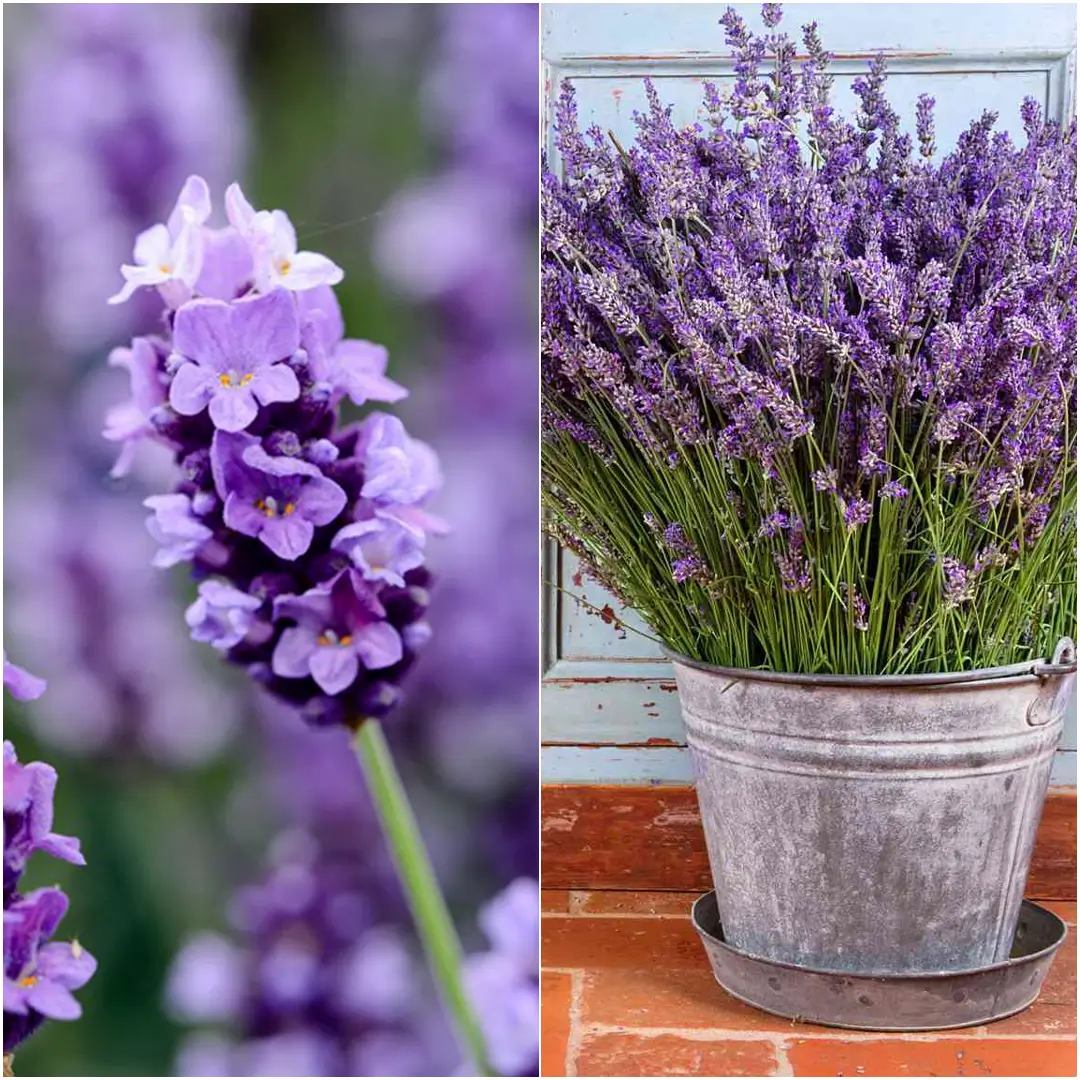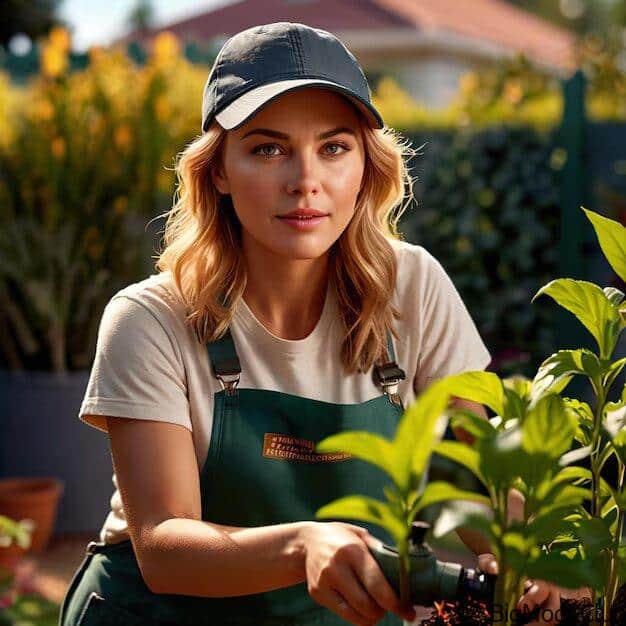Lavender is a beautiful, fragrant plant that adds charm, color, and a soothing scent to any garden. It’s not just about aesthetics though—lavender also plays a critical role in supporting pollinators like bees, and its oil is well-known for its calming properties. If you’ve been dreaming of filling your garden or patio with the rich, floral scent of lavender, you’re in the right place! Let’s dive into everything you need to know about how to grow lavender successfully, from choosing the right variety to caring for your plants throughout the year.
What Is Lavender?
Lavender, a Mediterranean evergreen shrub, is renowned for its fragrant foliage and bee-friendly flowers. It thrives in full sun and free-draining soil, making it a great addition to gardens in warm, dry climates. However, don’t let that intimidate you; with the right care, lavender can be grown in various environments. This perennial plant comes in several species, each offering different characteristics suited to different growing conditions.
Lavender Varieties to Grow
Before we start planting, it’s important to choose the right variety for your garden. Lavender species vary in hardiness, flower shape, and foliage color, so picking the best one depends on your climate and preferences.
English Lavender (Lavandula angustifolia)
If you’re looking for a robust, long-lived variety, English lavender is your best bet. This hardy species can withstand colder temperatures and is ideal for creating hedges, borders, or just adding a pop of color to your garden. Its flowers attract bees more than other varieties, making it a great choice for pollinator-friendly gardens.
French Lavender (Lavandula dentata)
French lavender is less hardy but boasts a long flowering period. It’s an excellent option for gardeners in milder climates who want a touch of Mediterranean flair. The flowers are usually topped with colorful “bracts,” which give them a distinctive look.
Spanish Lavender (Lavandula stoechas)
Spanish lavender, known for its vibrant, tufted blooms, is another half-hardy option. While it’s not as cold-resistant, it thrives in sunny, sheltered spots and can be a showstopper in pots or containers.
Lavender Hybrids (Lavandula x intermedia)
Hybrids, such as ‘Grosso’ and ‘Edelweiss,’ combine the best traits of English and other lavenders. They are more robust, with longer flowering periods and larger blooms. These varieties are also more tolerant of different soil conditions, making them ideal for gardeners who may have slightly wetter or colder environments.
Best Growing Conditions for Lavender
Lavender may seem like a delicate plant, but it’s incredibly tough if given the right conditions. Here’s what lavender needs to thrive.
Full Sun Is Key
Lavender loves the sun! Choose a location where your plants will receive at least 6 to 8 hours of direct sunlight every day. If you’re growing lavender in pots, place them in the sunniest spot available—your lavender will thank you.
Soil Requirements
Lavender prefers free-draining, neutral to alkaline soil. Wet, heavy soils can lead to root rot, especially in winter, so good drainage is essential. If your soil is heavy or clay-based, mix in horticultural grit or sand to improve drainage. You could also consider planting your lavender on a slight mound to help water drain away from the roots.
Handling Acidic Soil
If your soil is more on the acidic side, French lavender (Lavandula stoechas) may be more suited to your garden as it can tolerate those conditions better than other types.
Planting Lavender
Once you’ve chosen your lavender variety and identified the perfect spot, it’s time to plant! Here’s how to do it:
When to Plant
The best time to plant lavender is in the spring, from March to May. Planting at this time ensures that your lavender will have plenty of time to establish itself before the colder months arrive.
Prepare the Soil
If you’re planting lavender directly into the ground, make sure the soil is well-drained. Improve heavy soils by adding horticultural grit to the planting hole. A sprinkling of bonemeal can also help establish strong roots.
Planting in Pots
Lavender grows beautifully in pots, especially if you’re growing half-hardy varieties that need to be moved indoors during the winter. Choose a terracotta pot with drainage holes and fill it with John Innes no. 2 or 3 compost, mixing in some grit to enhance drainage.
Depth and Spacing
When planting lavender, make sure to plant it at the same depth as it was in its pot. Space plants about 12 to 18 inches apart to allow for good air circulation, which helps prevent fungal diseases.
Caring for Lavender Plants
Lavender is relatively low maintenance, but it still needs some attention to flourish. Let’s break down the essentials.
Watering
Lavender is drought-tolerant, but you should water it regularly during its first growing season to help establish the roots. Once mature, it will need less water. Avoid overwatering, especially in pots, as lavender doesn’t like to sit in soggy soil.
Pruning Lavender
Pruning is one of the most important steps in caring for lavender. Without proper pruning, lavender can become leggy and unattractive.
- Hardy Varieties: Prune after flowering in August or September. Cut back the plant, but avoid cutting into old wood as lavender does not regrow from woody stems.
- Half-Hardy Varieties: These should also be pruned after their first flush of flowers fades. Aim to prune no later than early September to give the plant time to recover before winter.
- Tender Varieties: Only prune if the plant becomes scruffy, as these types don’t regrow easily if cut back too hard.
Winter Care
For hardy lavender varieties, such as Lavandula angustifolia and Lavandula x intermedia, you don’t need to do much for winter protection. However, half-hardy and tender types should be moved to a sheltered, frost-free spot during winter or covered with horticultural fleece.
Propagating Lavender: How to Take Cuttings
Lavender is easy to propagate by taking cuttings. Here’s how:
- Take Cuttings in Late Summer: Choose non-flowering shoots that are about 10 cm long. Look for those with a woody base and fresh green tips.
- Prepare the Cuttings: Strip off the lower leaves and trim the base of the cutting.
- Plant the Cuttings: Fill small pots with peat-free compost, water thoroughly, and push the cuttings into the compost. Make sure about 1-2 cm of the stem is below the surface.
- Create a Humid Environment: Cover the pots with a clear plastic bag and place them in a light, airy place, such as a greenhouse. The cuttings should root in a few weeks.
Common Lavender Problems and How to Fix Them
Lavender is generally trouble-free, but a few common issues can crop up.
Leggy Plants
If your lavender looks leggy, it’s likely due to poor pruning. To avoid this, always prune back after flowering and make sure you don’t just deadhead the plant, as this encourages legginess.
Woody Plants
Lavender can become woody with age. If your plant has lots of bare stems, try pruning it just above the green shoots. If new growth doesn’t appear within a month, it’s time to replace the plant.
Lavender Is a Delightful Addition to Any Garden
Now that you know how to grow lavender, you’re all set to add this fragrant beauty to your garden! Whether you’re dreaming of English lavender hedges, filling pots with French lavender, or experimenting with hybrids, lavender is a versatile, low-maintenance plant that rewards you with vibrant blooms and soothing scents year after year.
So why not give it a try? With the right care and attention, you’ll soon have your own lavender haven that’s not only beautiful but also beneficial for the bees!
FAQs
Where does lavender grow best?
Lavender grows best in areas with full sun and well-draining, neutral to alkaline soil. Mediterranean climates are ideal, but it can also thrive in gardens with plenty of sunlight and dry conditions. If you live in a colder climate, choose hardy varieties like English lavender.
How long does lavender take to grow?
Lavender usually takes around 90 to 200 days to fully mature, depending on the variety and growing conditions. Seeds can take a while to germinate, but once lavender is established, it grows relatively quickly.
Can I grow lavender at home?
Absolutely! Lavender can be grown at home in pots or directly in the garden. Just make sure it gets plenty of sunlight, and use well-draining soil to prevent waterlogging. Lavender is great for indoor or outdoor spaces, especially in containers that can be moved indoors during colder months.
How to maintain lavender?
Maintaining lavender is simple! It requires occasional watering, particularly during dry spells, and annual pruning after flowering to keep it from getting leggy or woody. Ensure it has enough sunlight and well-drained soil, and avoid overwatering. In colder climates, move half-hardy varieties indoors during winter or protect them with fleece.


